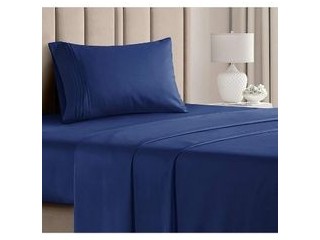How they help with up-close vision
2 years ago Fashion San Antonio 636 views Reference: 34992Location: San Antonio
Price: Contact us
What are reading glasses?
Reading glasses, available in over-the-counter or prescription versions, improve the ability to read something up close, such as a book or a computer screen.
Alabama optometrist Dr. Samuel Pierce, past president of the American Optometric Association, says over-the-counter reading glasses — which can be purchased at drugstores, department stores and other general retailers without a prescription — are designed for short-term wear, and are best suited for people who have the same lens power, or strength, in each eye and don’t have astigmatism, a common condition that causes blurred vision.
The Vision Council, a trade group, says the lens power of over-the-counter reading glasses typically ranges from +1 to +4.
Over-the-counter reading glasses are an acceptable option for people who have good distance vision (farsightedness), says Dr. Ming Wang of Wang Vision 3D Cataract & LASIK Center in Nashville.
However, if you suffer from computer eyestrain or double vision, then it’s wise to explore prescription reading glasses, Wang says.
Prescription reading glasses are meant to be worn for extended periods, Pierce says, and are ideal for people with astigmatism, myopia, serious eye disorders or unequal prescription strength in each eye.
When do you need reading glasses?
Just about anyone in their 40s and beyond will, at some point, need reading glasses (or another type of near-vision correction), Wang says.
Reading glasses help compensate for diminished vision related to presbyopia, the normal age-related loss of the ability to focus on up-close objects, such as words in a book or a text message on a smartphone.
Dr. Michelle Andreoli, an Illinois ophthalmologist and clinical spokesperson for the American Academy of Ophthalmology, says you typically realize the need for reading glasses if you encounter trouble reading small print when you’re tired and when lighting in the room is dim, or if you find that it’s easier to read something when you pull it a little farther away from your face.
How do I pick the right reading glasses for me?
Before selecting your reading glasses — even the over-the-counter kind — visit with your eye care professional. Experts recommend a yearly eye exam to check for problems like glaucoma, cataracts and macular degeneration, even after you’ve gotten reading glasses.
For computer work, most people can get by with low-power reading glasses (+1.25 to +1.5), Wang says. For reading things that are closer, stronger glasses might be in order (+2.0 to +2.5). As you age, the power you need likely will increase.
Wang notes that some people require one lens power for general up-close reading and another power for extended reading like computer use — meaning that just one pair of reading glasses might not do the trick.
Pierce warns that headaches, eyestrain and even nausea can result from putting on reading glasses that don’t have the proper lens power.
Once you’ve determined the right power, then focus on glasses with high-quality lenses and sturdy frames, Wang recommends.
Depending on the quality, a pair of over-the-counter nonprescription reading glasses can cost anywhere from $1 to $50 or more; a pair of prescription eyeglasses easily can cost $200 and up.
“Lower-quality, less expensive reading glasses may be made with low-quality lens materials, which can cause vision distortion, color distortion or glare. This can contribute to difficulty focusing when reading. It is worth spending a little extra to get better visual quality,” Wang says.




